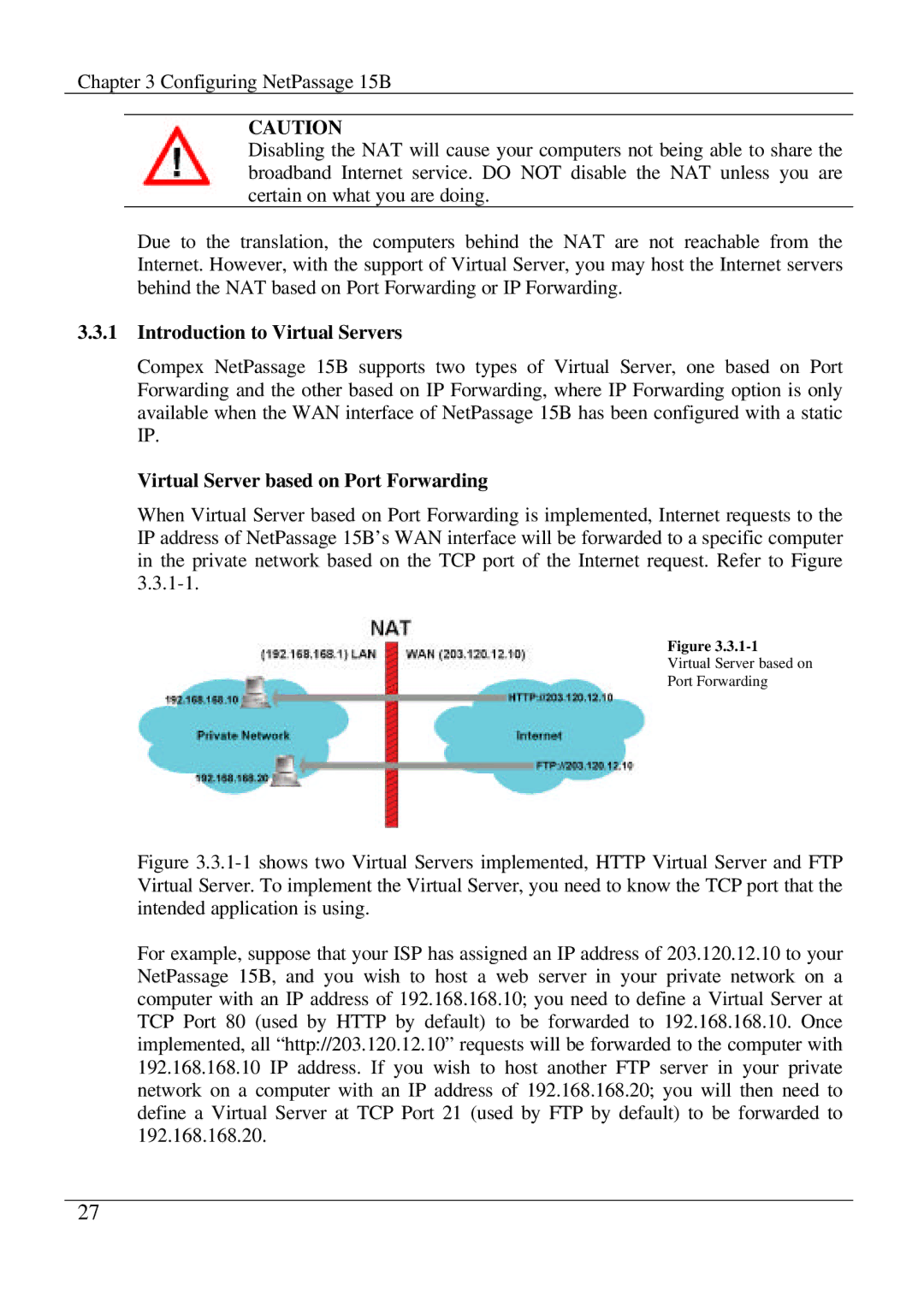
Chapter 3 Configuring NetPassage 15B
CAUTION
Disabling the NAT will cause your computers not being able to share the broadband Internet service. DO NOT disable the NAT unless you are certain on what you are doing.
Due to the translation, the computers behind the NAT are not reachable from the Internet. However, with the support of Virtual Server, you may host the Internet servers behind the NAT based on Port Forwarding or IP Forwarding.
3.3.1Introduction to Virtual Servers
Compex NetPassage 15B supports two types of Virtual Server, one based on Port Forwarding and the other based on IP Forwarding, where IP Forwarding option is only available when the WAN interface of NetPassage 15B has been configured with a static IP.
Virtual Server based on Port Forwarding
When Virtual Server based on Port Forwarding is implemented, Internet requests to the IP address of NetPassage 15B’s WAN interface will be forwarded to a specific computer in the private network based on the TCP port of the Internet request. Refer to Figure
Figure
Virtual Server based on
Port Forwarding
Figure 3.3.1-1 shows two Virtual Servers implemented, HTTP Virtual Server and FTP Virtual Server. To implement the Virtual Server, you need to know the TCP port that the intended application is using.
For example, suppose that your ISP has assigned an IP address of 203.120.12.10 to your NetPassage 15B, and you wish to host a web server in your private network on a computer with an IP address of 192.168.168.10; you need to define a Virtual Server at TCP Port 80 (used by HTTP by default) to be forwarded to 192.168.168.10. Once implemented, all “http://203.120.12.10” requests will be forwarded to the computer with 192.168.168.10 IP address. If you wish to host another FTP server in your private network on a computer with an IP address of 192.168.168.20; you will then need to define a Virtual Server at TCP Port 21 (used by FTP by default) to be forwarded to 192.168.168.20.
27
